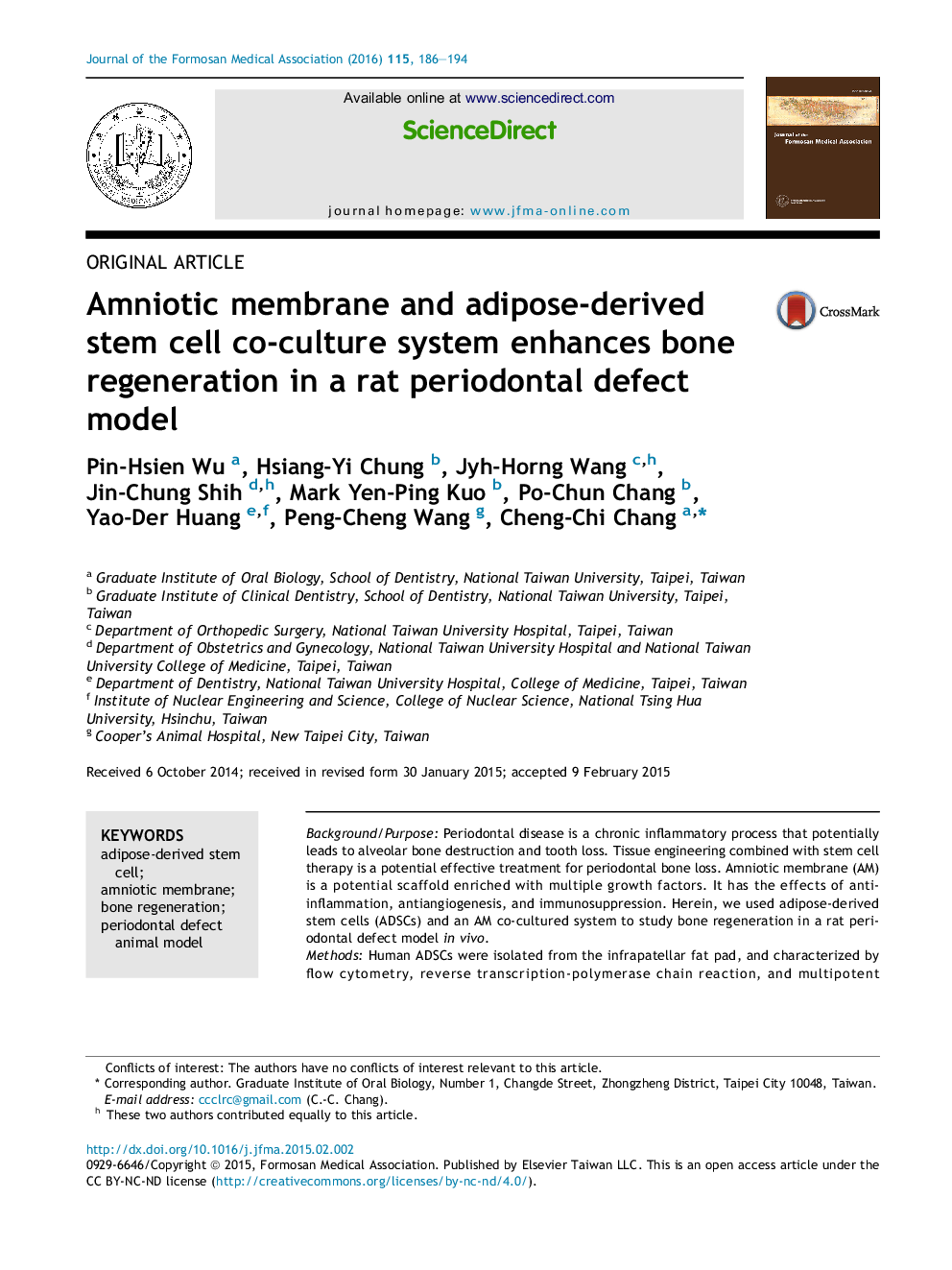| Article ID | Journal | Published Year | Pages | File Type |
|---|---|---|---|---|
| 3478248 | Journal of the Formosan Medical Association | 2016 | 9 Pages |
Background/PurposePeriodontal disease is a chronic inflammatory process that potentially leads to alveolar bone destruction and tooth loss. Tissue engineering combined with stem cell therapy is a potential effective treatment for periodontal bone loss. Amniotic membrane (AM) is a potential scaffold enriched with multiple growth factors. It has the effects of anti-inflammation, antiangiogenesis, and immunosuppression. Herein, we used adipose-derived stem cells (ADSCs) and an AM co-cultured system to study bone regeneration in a rat periodontal defect model in vivo.MethodsHuman ADSCs were isolated from the infrapatellar fat pad, and characterized by flow cytometry, reverse transcription-polymerase chain reaction, and multipotent differentiation assays. The co-culture system was applied in the periodontal two-wall osseous defect in a rat model, and computed tomography was used to measure the effect.ResultsHuman ADSCs isolated from the infrapatellar fat pad showed spindle-like morphology. Flow cytometry results demonstrated that ADSCs expressed a high level of CD90 and CD105, but not CD31, CD34, and CD45. ADSCs strongly expressed stemness genes, including SOX2, OCT4, NANOG, and KLF4 on different passages. Furthermore, ADSCs were able to differentiate into osteogenic, chondrogenic, and adipogenic cells. In the periodontal osseous defect rat model, ADSCs and the AM co-culture system significantly increased bone regeneration.ConclusionThis study provides the basis for using ADSCs with an AM co-culture system as stem cell therapy and scaffold transplantation in clinical periodontology.
